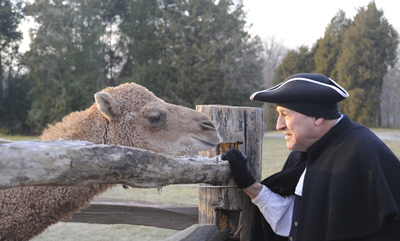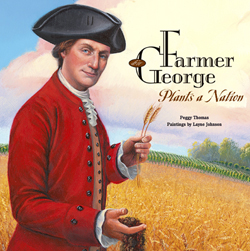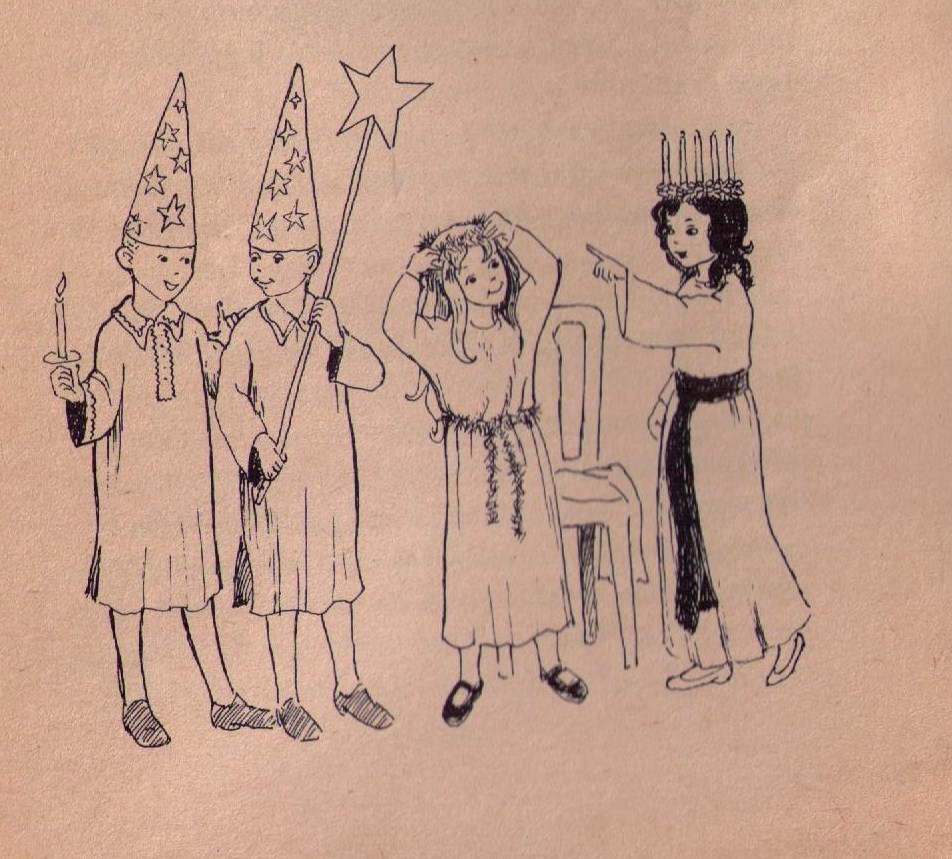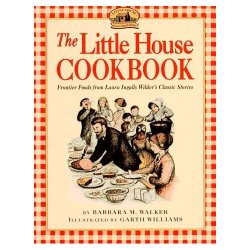
No, that's not the title of the latest picture book about George Washington (I'm still writing it). Apparently, Washington paid 18 shillings to bring a camel to Mount Vernon for the Christmas holidays in 1787. This year, the folks at Mount Vernon have expanded their Christmas program to include another Christmas camel, one-year-old Aladdin (pictured above with a Mount Vernon volunteer). Leo's class got to see the camel on a field trip to Mount Vernon: it was the high point of their visit. Well, the camel, and being interviewed by a FOX television news reporter about the camel (the segment aired yesterday). There is a surprising amount of local interest in this. Actually, I feel a little bad for former White House pastry chef Roland Mesnier, who spent 300 hours reconstructing Mount Vernon out of gingerbread for this year's Christmas program only to be upstaged by a camel.
 This seems like a good opportunity to mention a recent nonfiction picture book about George Washington, Farmer George Plants a Nation by Peggy Thomas; paintings by Layne Johnson (Calkins Creek, 2008). Visitors to Mount Vernon learn (if they are not too distracted by the camel) that Washington considered himself first and foremost a farmer. This book draws a neat parallel between Washington's work as a farmer, specifically his efforts to make Mount Vernon self-sustaining, and his more well-known accomplishments as general and president. The text is accompanied by well-chosen quotes from Washington's diaries and letters; back matter includes a timeline, short essays about George at Mount Vernon and George's thoughts on slavery, and a good bibliography. No camels, though!
This seems like a good opportunity to mention a recent nonfiction picture book about George Washington, Farmer George Plants a Nation by Peggy Thomas; paintings by Layne Johnson (Calkins Creek, 2008). Visitors to Mount Vernon learn (if they are not too distracted by the camel) that Washington considered himself first and foremost a farmer. This book draws a neat parallel between Washington's work as a farmer, specifically his efforts to make Mount Vernon self-sustaining, and his more well-known accomplishments as general and president. The text is accompanied by well-chosen quotes from Washington's diaries and letters; back matter includes a timeline, short essays about George at Mount Vernon and George's thoughts on slavery, and a good bibliography. No camels, though!

















